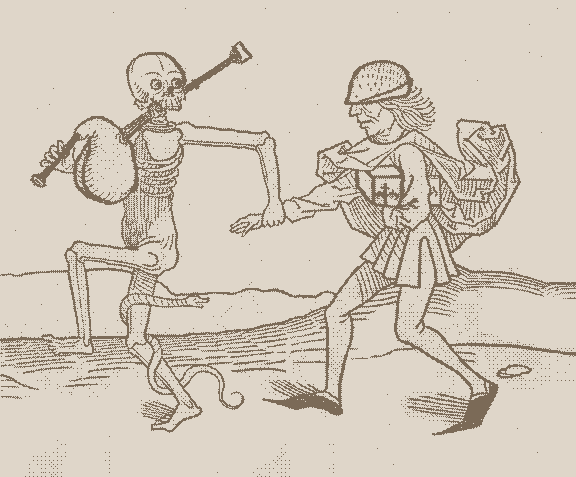BY: BRITTNEY SPROULE
This fine and toasty Monday, I thought we could take a little time to become better acquainted with a phenomenon so many of us know and love: the GIF.
Now, you may be giving me a similar look as my dear friend Mr. Ventura up there, thinking "but is this not "museum" Monday? Is Musings not a classy place for cultural discussion?" Do not fret! As much as I'd love to fill this post with an endless supply of my personal favourite genre of GIFs - hockey GIFs - I'd like to take a gander at how contemporary artists have been exploring GIFs as outlets for artistic expression within the past decade or two. As a result, these "new" artforms have begun to snag some real estate in art galleries - as part of mixed media exhibitions or as part of exhibitions entirely devoted to GIF art.
GIFs, aka Graphics Interchange Formats, have actually been around since 1987. I won't go into the technological details of how they work (click on the previous link for these details), but essentially GIFs allow one to store multiple images in a single file to create a simple animation.

By digital artist Hateplow
But why the artistic attraction to these simple animated files? Artists and curators from a few different GIF-centered exhibitions have some thoughts on the matter:
"They attract attention. They flicker and undulate. They stutter... Focusing on work that engages both the language of the Internet and fine art, this exhibition aims to articulate the value of the GIF in the context of the gallery."
-Paddy Johnson, curator of "Graphics Interchange Format," Denison University's Mulberry Gallery (Granville, OH).
"In a world where most Digital SLR cameras can shoot high definition video, digital technology raises questions concerning what a photograph is and how we make sense of it...Our opening show embraces the animated GIF as a uniquely screen-based image."
-Katrina Sluis, curator of "Born in 1987: The Animated GIF," The Photographers' Gallery (London UK).

Saul Chernick, "Totentanz 2.0 (After Heinrich Knoblochtzer)," 2008
In the GIF above, Saul Chernick's Renaissance-inspired GIFs raise some interesting points for ponder. According to this article, as much as this particular set of GIFs is about death, Chernick also based his animations on some of the first cheap and accessible prints of their kind, much like gifs.
After taking a look around Chernick's own website, I am particularly fascinated by his "interest in the intersection between old and new forms of media and how cultural ideas evolve, as they are adapted to new technologies over time." Chernick's use of the GIF medium to explore his fascination with religions iconography and the metaphysical also yield some very provocative results. He appears to be using computer animation to breathe life into otherwise static mystical images or intangible ideas in order to make them more tangible in a sense.
Anyway, I could go on forever and provide you with millions of GIF art examples and thoughts about them, but I'd rather know what you think!
You may want to check this Buzzfeed article (I know, my sources represent the summit of academic excellence) titled "30 Artists Proving that GIFs are the Next Great Artform" for inspiration. Could GIFs truly be "the next great artform" (whatever that means)? Perhaps a better question, do you think GIF's are effective at all as an artistic medium? Can they be affective? Are they a creative way to capture the attention of audiences and engage them? Do you ever use GIFs to express yourself, either informally (ex. facebook, text messaging, etc.) or as a more formal medium of artistic expression?
Enjoy!



I would never question your selection of a media text to discuss in a museum studies blog :) So I am glad to see the GIF featured in your post - the reason why I find this media interesting is its in between-ness (between animation and photography); there is something crafty about this genre of media (and we know that craft is a much loved word in our DYI times) as pretty much anyone could be able to make one but there is enough technology involved to coincide with our contemporary fascination with high tech practices. I have never seen as exhibition dedicated fully to GIF but now that you brought these to our attention, why not? I wonder if GIF could also be used as a form of media in other types of exhibitions or as a form of support for content that is not about GIF itself. I have not seen such an example yet in a museums but I will pay more attention now.
ReplyDeleteThanks for the comment Irina! I agree with you, the between-ness of GIFs is definitely something that struck me as well. Between animation and photography, as you said, between time periods, juxtaposing different subject matter in one animation, etc. etc.
ReplyDeleteSome of the examples of exhibitions I cam across while writing this post were certainly thought provoking. I recall one where the entire gallery was just QR codes of various sizes plastered on the walls as artworks typically would be. No physical art was in the space just QR codes. Visitors then had to use some sort of mobile technology to scan the codes and access the GIFs. An interesting take on user interaction that's for sure. Also, as you mentioned, pretty much anyone can make a GIF. Many exhibitions that feature this media also thrive on visitor contributions of GIFs rather than just those of digital artists. Another interesting discussion here perhaps on what distinguishes "GIF art" or a digital artist's GIF work from that of the "average" person (if anything)?